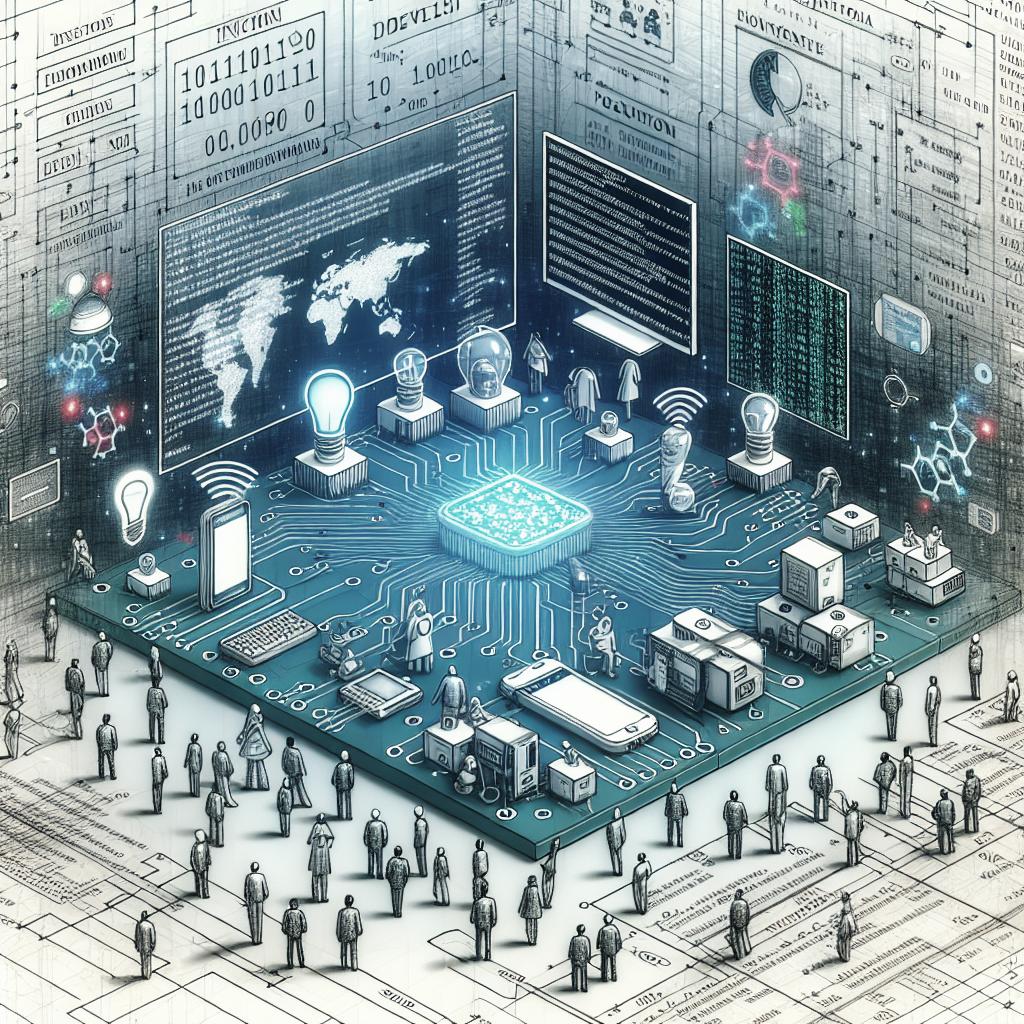“`html
Understanding Key Considerations for IoT Programming
The Internet of Things (IoT) is transforming how we interact with the world, introducing a network of connected devices that communicate seamlessly. With the proliferation of IoT devices, there are significant programming considerations, such as effective data management and design principles. This blog outlines essential considerations like connectivity, continuity, compliance, coexistence, and cybersecurity. Additionally, we’ll delve into the importance of robust data management and offer insights on the pivotal role it plays in successful IoT implementations. As we explore these factors, we aim to equip you with the knowledge needed for efficient IoT programming and maintenance, ensuring your next project is well-informed and cutting-edge.
What is the Internet of Things?
The Internet of Things (IoT) refers to the interconnected network of physical devices embedded with sensors, software, and other technologies, enabling them to gather and exchange data. This digital ecosystem extends beyond traditional computing devices to encompass everyday objects, vehicles, home appliances, and industrial machines. By integrating these elements with information systems, IoT enhances productivity, efficiency, and decision-making across various sectors.
IoT’s potential lies in its ability to transform raw data into actionable insights. Through continuous data collection and analysis, IoT systems improve operational efficiencies, reduce costs, and provide customized experiences. From smart homes to industrial automation, the IoT’s dynamic capabilities redefine how we interact with technology and the world around us.
The Importance of Effective Data Management in IoT
Effective data management is crucial for IoT programming because IoT devices generate massive amounts of data. Managing this data efficiently requires robust strategies for collection, storage, integration, and analysis. Without proper data management, the risk of data loss, corruption, and breaches increases, hindering the success of IoT projects.
Furthermore, IoT data management influences the quality of insights drawn from collected data. By implementing a well-structured approach, organizations can ensure data reliability and integrity, enabling accurate decision-making. Efficient data processing maximizes the potential of IoT, offering businesses a competitive edge by leveraging data-driven insights to improve products, services, and processes.
10 Key Considerations for IoT Data Management
When implementing IoT solutions, organizations must address ten key considerations ranging from data accuracy and security to scalability and interoperability. Data accuracy and reliability are paramount, ensuring meaningful and actionable insights. Security is equally crucial to protect sensitive data from threats, while scalability ensures the system can adapt to growing data volumes and connected devices.
Interoperability refers to the ability of diverse IoT systems and platforms to communicate effectively. This consideration is vital for seamless operation and integration across various devices and solutions. Additionally, organizations must plan for data governance, retention policies, and privacy concerns to comply with regulations and build trust with users and stakeholders.
Five Design Considerations
Connectivity
Connectivity is a fundamental aspect of IoT design, determining how devices communicate and share data. Reliable connectivity ensures consistent data flow and uninterrupted device operation. Various connectivity options are available, including Wi-Fi, Bluetooth, cellular networks, and low-power wide-area networks (LPWAN). The choice of connectivity depends on factors like range, data throughput, power consumption, and the specific requirements of the IoT application.
Establishing robust connectivity also involves addressing network latency, bandwidth limitations, and potential interference. Organizations must evaluate the pros and cons of each connectivity option, considering the use case, environment, and scalability. Future-proofing the system with flexible connectivity solutions can maintain seamless device interactions as technology evolves.
Continuity
Continuity in IoT systems refers to maintaining seamless device operation and data flow despite potential disruptions. These disruptions can stem from network failures, power outages, or device malfunctions. Designing for continuity involves implementing strategies for redundancy, failover mechanisms, and robust error recovery.
Redundancy ensures that even if one component fails, the system continues to function, maintaining critical operations. Failover mechanisms automatically switch to backup resources or pathways, minimizing downtime. Incorporating real-time monitoring and diagnostics helps identify issues quickly, allowing prompt resolutions and ensuring the uninterrupted functionality of IoT systems.
Compliance
Compliance is a crucial consideration in IoT programming, focusing on adhering to industry standards, regulations, and best practices. With diverse applications across sectors, IoT solutions must comply with specific regulatory requirements related to data privacy, security, and communications. Understanding these regulations at local, national, and international levels helps organizations avoid legal issues and enhance customer trust.
Aside from legal compliance, adhering to industry standards ensures interoperability and compatibility with other systems and devices. By following established protocols and frameworks, developers can create IoT solutions that seamlessly integrate with existing infrastructure, facilitating broader adoption and market acceptance.
Coexistence
Coexistence refers to the ability of diverse IoT devices and technologies to function harmoniously within the same environment. IoT ecosystems are often diverse, comprising devices from different manufacturers employing varying communication protocols. Without effective coexistence strategies, interference and conflicts can arise, leading to performance degradation and connectivity issues.
To ensure coexistence, organizations need to implement robust strategies, including spectrum management, protocol compatibility, and proper device configuration. Testing and validating devices in various scenarios can help identify potential conflicts, enabling developers to optimize system performance and ensure seamless operation across diverse IoT environments.
Cybersecurity
Cybersecurity is a paramount consideration in IoT programming, safeguarding devices, data, and networks from malicious threats and vulnerabilities. Given the widespread connectivity and data exchange inherent in IoT systems, securing every layer—from devices to cloud infrastructure—is essential to prevent unauthorized access and data breaches.
Implementing multi-layered security measures, such as encryption, authentication, and access controls, fortifies IoT systems against cyber threats. Regular software updates and vulnerability assessments also enhance security, closing potential loopholes and strengthening resilience. By prioritizing cybersecurity, developers can build trust with users, ensuring the reliability and safety of IoT solutions.
Have an upcoming project?
If you’re gearing up for an upcoming IoT project, equipping yourself with knowledge on key considerations will streamline your efforts and enhance your outcomes. In addition to the design and data management considerations discussed above, it’s essential to align your goals with the latest technological advancements and market trends.
Collaborating with experts and leveraging modern tools and platforms can facilitate efficient development and deployment. Emphasizing user-centric design and iterative testing processes ensures the final product aligns with user needs and expectations. With careful planning, adherence to best practices, and a keen eye on industry developments, your IoT project is poised for success.
Final Thoughts
IoT programming involves various considerations crucial for deploying robust, efficient, and secure solutions. Key considerations include design elements like connectivity and continuity as well as data management and compliance issues. Cybersecurity and coexistence are equally essential, ensuring seamless operation amid diverse environments and evolving threats. As you embark on IoT projects, staying informed on industry trends and technological advancements will empower you to innovate and excel in harnessing the potential of IoT. By prioritizing these considerations, you optimize functionality, enhance user experience, and drive success in your IoT endeavors.
| Consideration | Highlights |
|---|---|
| Internet of Things | Network of connected physical devices |
| Data Management | Ensures data accuracy, integrity, and reliability |
| Connectivity | Robust communication options for devices |
| Continuity | Redundancy and failover for seamless operations |
| Compliance | Adherence to regulations and standards |
| Coexistence | Harmonious operation within diverse environments |
| Cybersecurity | Multi-layered protection against cyber threats |
“`


